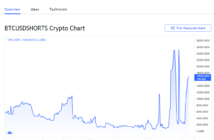As the popularity of Bitcoin continues to rise, many people are wondering when this cryptocurrency will run out. To shed some light on this topic, we have compiled a list of three articles that provide insights into the potential future of Bitcoin and when it may run out. These articles discuss various factors such as the mining process, supply limits, and market trends that could impact the availability of Bitcoin in the years to come.
The Truth About Bitcoin's Limited Supply: Will It Ever Run Out?
Bitcoin's limited supply is a fundamental aspect of its design that sets it apart from traditional fiat currencies. With a total supply cap of 21 million coins, Bitcoin is often hailed as a deflationary asset that cannot be manipulated by central banks or governments. But will it ever run out?
The answer is no. While Bitcoin's supply is indeed limited, it does not mean that there will be no more coins left to mine. The process of mining Bitcoin involves solving complex mathematical puzzles to validate transactions on the network and secure it from attacks. As more coins are mined, the difficulty of these puzzles increases, making it harder to mine new coins. This mechanism ensures that new Bitcoins are created at a predictable and decreasing rate until the total supply cap is reached.
It is estimated that the last Bitcoin will be mined around the year 2140, more than a century from now. By that time, the vast majority of Bitcoins will have already been mined, and the remaining coins will be released at a much slower rate. This gradual approach to releasing new coins helps maintain the scarcity and value of Bitcoin over time.
Analyzing the Impact of Bitcoin Halving Events on Supply and Demand
Bitcoin halving events have long been a topic of interest for cryptocurrency enthusiasts and investors around the world. These events, which occur approximately every four years, have a significant impact on the supply and demand dynamics of Bitcoin.
When a Bitcoin halving event occurs, the number of new Bitcoins created and earned by miners is cut in half. This reduction in the supply of new Bitcoins entering the market has historically led to an increase in the price of Bitcoin. This is due to the fact that with fewer new Bitcoins being mined, the existing supply becomes more scarce, driving up demand among investors.
The most recent Bitcoin halving event took place in May 2020, and once again, it had a noticeable impact on the price of Bitcoin. In the months leading up to the halving, there was a lot of speculation and anticipation surrounding the event, with many investors hoping to capitalize on the expected price increase.
Overall, analyzing the impact of Bitcoin halving events on supply and demand is crucial for understanding the dynamics of the cryptocurrency market. By examining how these events affect the price of Bitcoin, investors can make more informed decisions about when to buy or sell, ultimately maximizing their profits in this volatile market. This article provides valuable insights into this important topic, shedding light on the factors that drive the
Predicting the Future of Bitcoin: What Experts Say About Its Long-Term Viability
none



